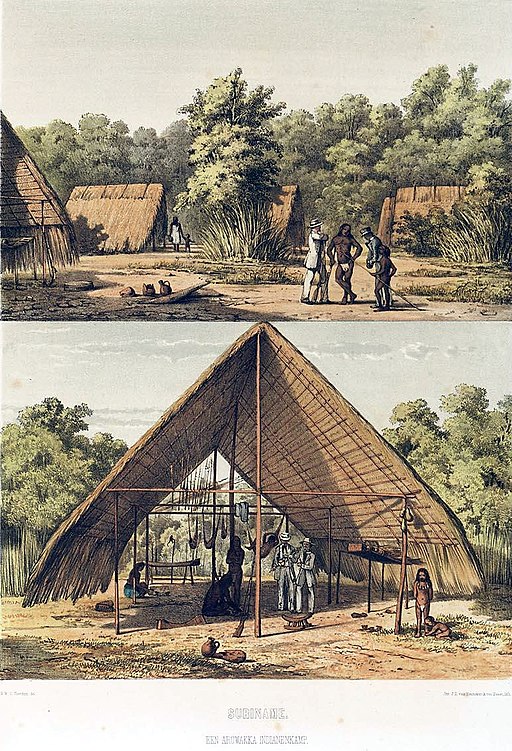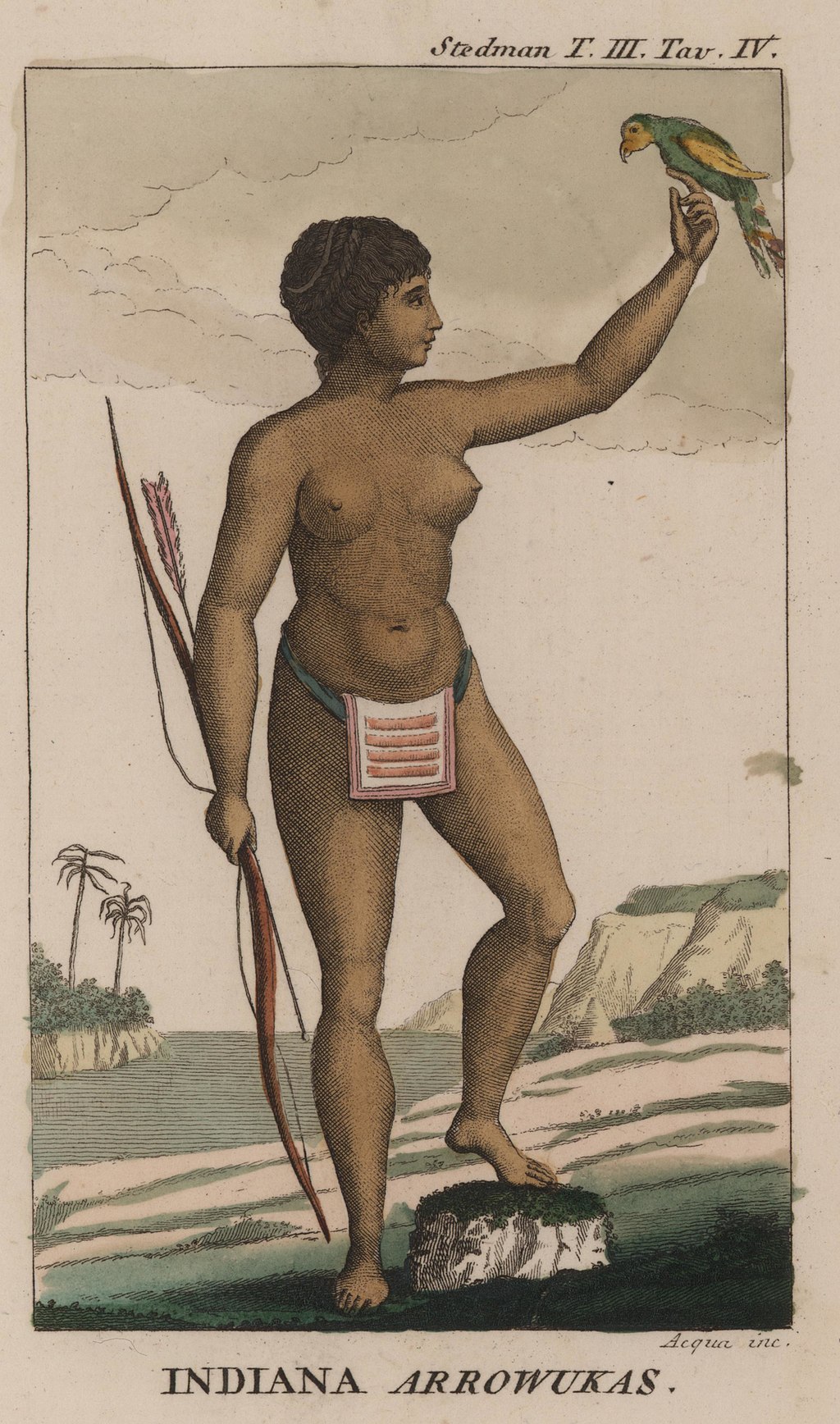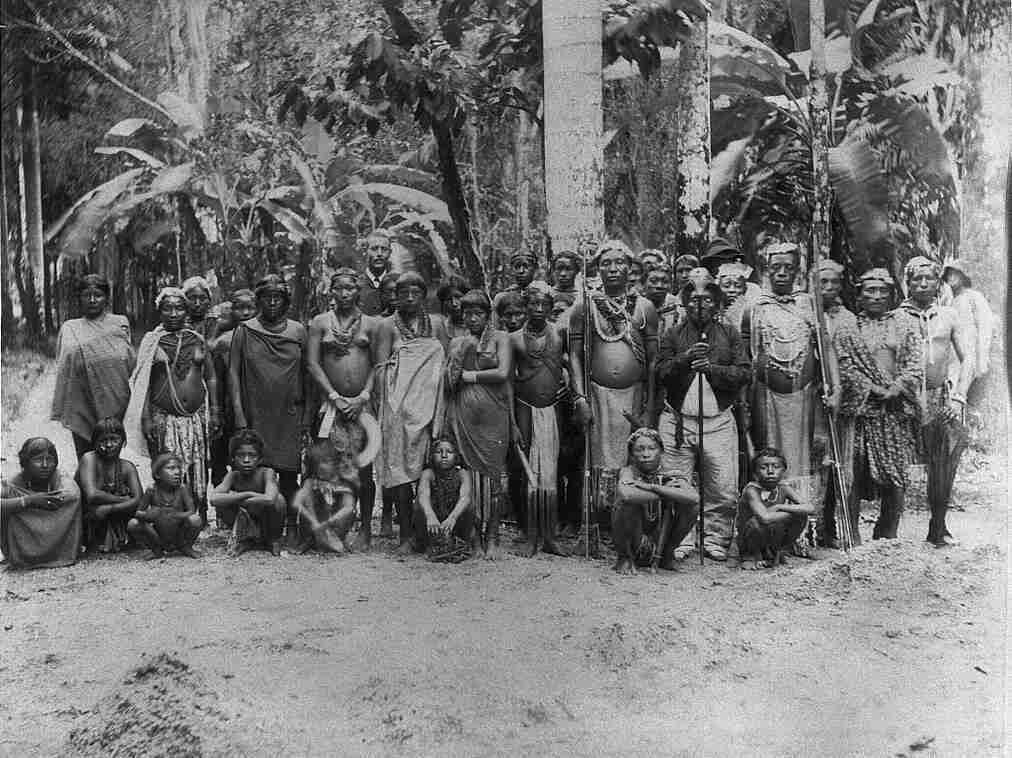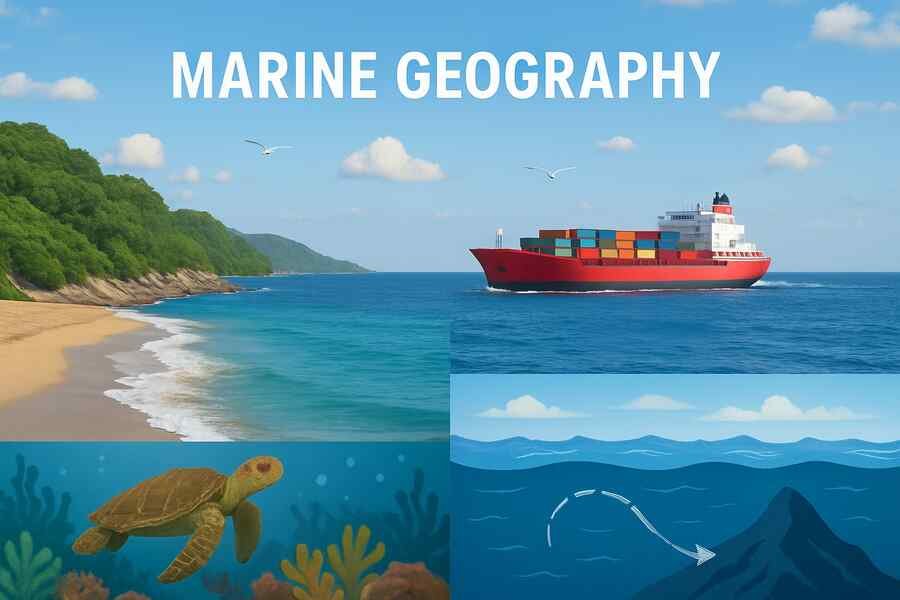The Arawak People, Native Americans of the West Indies
The Arawak people were a group of indigenous people who once inhabited large parts of South America and the Caribbean. Their culture and way of life were shaped by their relationship with the natural world, as well as their complex social structures and religious beliefs. In this article, we will explore the history, culture, and legacy of the Arawak people. Their religions are traditionally polytheism and also Christianity.

Town of the Arawaks (1860). G.W.C. Voorduin, Public domain, via Wikimedia Commons
History of the Arawak
The Arawak people are believed to have originated in the Amazon Basin and later spread throughout South America and the Caribbean. They were skilled farmers and fishermen who cultivated cassava, yams, and other crops, and used canoes to navigate the rivers and coasts of their territories. They also had a complex system of trade and diplomacy, which allowed them to maintain alliances and exchange goods with neighboring tribes.
Meeting with Europeans
The Arawaks would be the first Native Americans to have had contact with the Spaniards of the 15th century, that is to say Christopher Columbus and his crew. Columbus’ boat then arrived in the Bahamas, the strange big ship attracted the curiosity of the Amerindians, who, amazed, swam off to meet the visitors. When Columbus and his sailors landed, armed with their swords, speaking their strange language, the Arawaks quickly brought them food, water, gifts. Later Columbus wrote this: “They brought us parrots, bales of cotton, javelins and many other things, which they exchanged for glass beads and bells. They willingly exchanged everything they owned. They were well built, with harmonious bodies and graceful faces. They carry no weapons – nor do they know them, for when I showed them a sword, they took it by the blade and cut themselves, out of ignorance. They don’t know iron. Their javelins are made of reeds. They would make good servants. With fifty men, we could enslave them all and make them do whatever we want.
The Genoese navigator, fascinated by these hospitable people, wrote later: “As soon as I arrived in India, on the first island I encountered, I seized some natives by force, so that they could learn and be able to give me information on everything that could be found in these regions.
Cannibalism and Massacre
Cannibalistic practices were identified in the sixteenth century among the peoples who terrorized the Arawaks of the Greater Antilles.
The Arawaks of Hispaniola were enslaved by the Spanish. Exploited, the population of the island was halved in two years (250,000 people). In 1515, there were only 15,000 Indians left. By 1650, all the Arawaks and their descendants had disappeared.

Engraved rock, Arawak art in Guadeloupe (an overseas département and overseas region of France consisting of a group of islands in the Lesser Antilles chain, is located in the eastern Caribbean Sea). Timound, CC BY-SA 3.0, via Wikimedia Commons
Culture and Social Structure
The Arawak people had a rich culture that was shaped by their beliefs and traditions. They had a strong oral tradition and passed down stories and songs from generation to generation. They also had a complex social structure that was based on family relationships and clan affiliations. The Arawak people were skilled artisans who made intricate pottery, baskets, and textiles, and also had a rich tradition of music and dance.

Portrait of a group of Arawak Indians from Poika Creek and Bettie Creek along the lower reaches of the Saramacca River. Date between 1880 and 1900. Tropenmuseum, part of the National Museum of World Cultures, CC BY-SA 3.0, via Wikimedia Commons
Arawak languages
The name Arawak originally denoted exclusively an influential tribe in Guyana and Suriname . There are older descriptions of its language. It is still spoken in Suriname, Guyana, French Guiana and Venezuela .
The more than 60 languages known as Arawak were recognized as a separate language group in the late 19th century . In almost all languages called “Arawakan” today, the first-person singular prefix is nu- , but Arawak proper uses ta- . Other similarities include the second-person singular prefix pi- , the relative prefix ka- , and the negative prefix ma- .
In recent decades, these undoubtedly related languages have been renamed Maipurean by North American taxonomists to distinguish them from a larger, hypothetical language strain then called “Arawak” .
Legacy
The Arawak people’s legacy can be seen in many aspects of Caribbean culture. Their language has had a significant influence on modern-day Caribbean dialects, and their cuisine has also had an impact on the region’s food culture. Their traditional music and dance have also influenced many Caribbean musical styles, including reggae and calypso. Additionally, the Arawak people’s resistance to colonization and efforts to preserve their culture and traditions serve as a powerful example of resilience and perseverance.
Examples:
The Taino, a subgroup of the Arawak people, were skilled navigators who traveled throughout the Caribbean region. They used their knowledge of the stars and the sea to trade with other indigenous groups and establish a vast network of communication.
The Arawak people’s traditional pottery is still produced today by some indigenous communities in the Caribbean. These pieces are highly valued for their beauty and craftsmanship.
Read also: Native American Symbols and Their Meanings

Arawak woman (drawing by John Gabriel Stedman, 1818). John Gabriel Stedman, Public domain, via Wikimedia Commons
The arawak Tribes
These are just a few examples of the Arawak tribes that have existed and continue to exist in different parts of South America and the Caribbean. The Arawak people were one of the largest indigenous groups in South America and the Caribbean, and they were known by various names and subgroups. Here are some details about Arawak tribes:
Taino
The Taino were a subgroup of the Arawak people who inhabited the Caribbean islands of Hispaniola (present-day Haiti and the Dominican Republic), Puerto Rico, Jamaica, and Cuba. They were skilled navigators and traders, and their society was organized into chiefdoms.
Lokono
The Lokono Arawak people live in Guyana, Suriname, and French Guiana. They are one of the few remaining Arawak communities in South America and have worked to preserve their language and culture. The Taino people were a subgroup of the Arawak people who inhabited the Caribbean islands of Hispaniola (present-day Haiti and the Dominican Republic), Puerto Rico, Jamaica, and Cuba. They were skilled farmers and traders, and their society was organized into chiefdoms.
Garifuna
The Garifuna people are descended from a mix of Arawak, Carib, and West African people. They live along the Caribbean coast of Honduras, Belize, Guatemala, and Nicaragua and have their own distinct culture and language.
Taíno de Boriken
This group of Taino descendants in Puerto Rico has been working to preserve their culture and traditions, including their language, music, and spiritual practices.
Arahuaco
The Arahuaco are a subgroup of the Arawak people who live in the Sierra Nevada de Santa Marta mountain range in Colombia. They have their own language and spiritual practices and have worked to protect their land and resources from outside threats.
Yurumangui
The Yurumangui people are an Arawak subgroup who live in the northwestern region of Colombia. They have their own language, which is endangered, and their traditional territory includes the Serrania del Perija mountain range.
Akawaio
The Akawaio are an Arawak-speaking people who live in Guyana, Suriname, and Venezuela. They have a deep connection to the rainforest and practice subsistence farming and hunting.
Pemon
The Pemon people are an Arawak subgroup who live in the Gran Sabana region of Venezuela. They have a rich spiritual and cultural heritage, and their traditional territory includes the Canaima National Park, which is known for its waterfalls and unique geological formations.
Wapishana
The Wapishana people are an Arawak-speaking group who live in Guyana and Brazil. They have a strong tradition of storytelling and oral history and practice traditional agriculture and fishing.
Kali’na
The Kali’na people, also known as the Carib people, are an indigenous group who live in Guyana, Suriname, French Guiana, and Venezuela. They are closely related to the Arawak people and share many cultural and linguistic similarities.
Warao
The Warao people are an indigenous group who live in the Orinoco Delta region of northeastern Venezuela, as well as parts of Guyana and Trinidad and Tobago. They have their own language and are known for their intricate basket-weaving and woodcarving.
Arawak
The Arawak people were one of the largest indigenous groups in South America and the Caribbean. They inhabited a vast territory that included present-day Brazil, Venezuela, Guyana, Suriname, French Guiana, Trinidad and Tobago, and the Lesser Antilles.
Macushi
The Macushi people are an Arawak-speaking indigenous group who live in Guyana and Brazil. They have a deep connection to the natural environment and practice subsistence farming and fishing.
Araweté
The Araweté are an Arawak-speaking indigenous group who live in the Amazon rainforest in Brazil. They have a rich oral tradition and practice a unique form of body painting as part of their spiritual and cultural practices.
Arawak tribes today
Settlement area: today, Arawak ethnic groups only exist on the American mainland. On the Caribbean coast of Honduras, Guatemala, and Belize, about 130,000 Garifuna speak an evolved form of the Igneri language, which arose from the mingling of island Caribs, the Igneri-Arawak people they once subdued, and escaped African-American slaves. About 140,000 Wayuu, who belong to the Arawak people, live in the Guajira Peninsula , which belongs to Colombia and Venezuela.
Here are some points about the Arawak tribe today:
Present-day Arawak people are scattered throughout South America, Central America, and the Caribbean. They have assimilated into different cultures and societies over time, and many have lost touch with their traditional practices and languages.
However, some indigenous communities still identify as Arawak and strive to preserve their culture and traditions. For example, the Lokono Arawak people in Guyana have established a cultural center and museum to showcase their history and heritage.
In the Caribbean, the Garifuna people are descended from a mix of Arawak, Carib, and West African people. They have their own distinct culture and language, which incorporates elements of their Arawak ancestry.
The Arawak people’s traditional knowledge of medicinal plants and their use in healing practices is still relevant today. Some modern-day healers and herbalists incorporate Arawak practices into their work.
Despite ongoing efforts to preserve and promote their culture, many Arawak people continue to face discrimination and marginalization. In some cases, their land and resources have been taken away by governments and corporations, leading to displacement and loss of traditional practices.
Overall, the Arawak people’s legacy lives on in the diverse cultures and societies they have influenced over time, and their struggle for recognition and rights continues today.
Sources: PinterPandai, Researchgate, Britannica, Native Languages of the Americas, Study
Photo credit (main picture): Tropenmuseum, part of the National Museum of World Cultures, CC BY-SA 3.0, via Wikimedia Commons
Photo description: group of Arawak people in ceremonial outfit in the Garden of Palms next to the Dutch Governor house in Paramaribo, Suriname. Date between 1880 and 1900.



